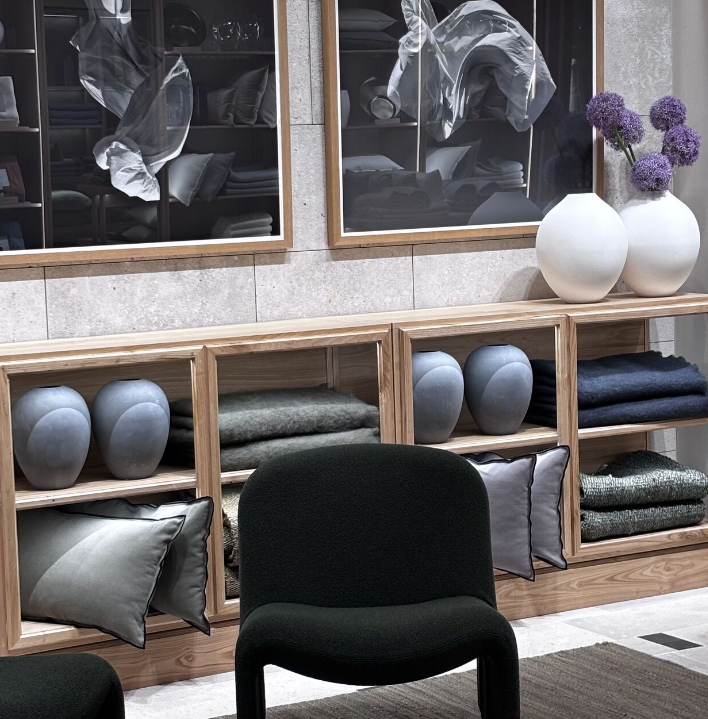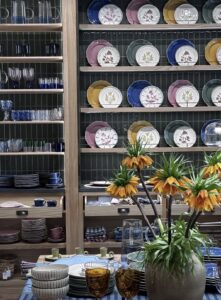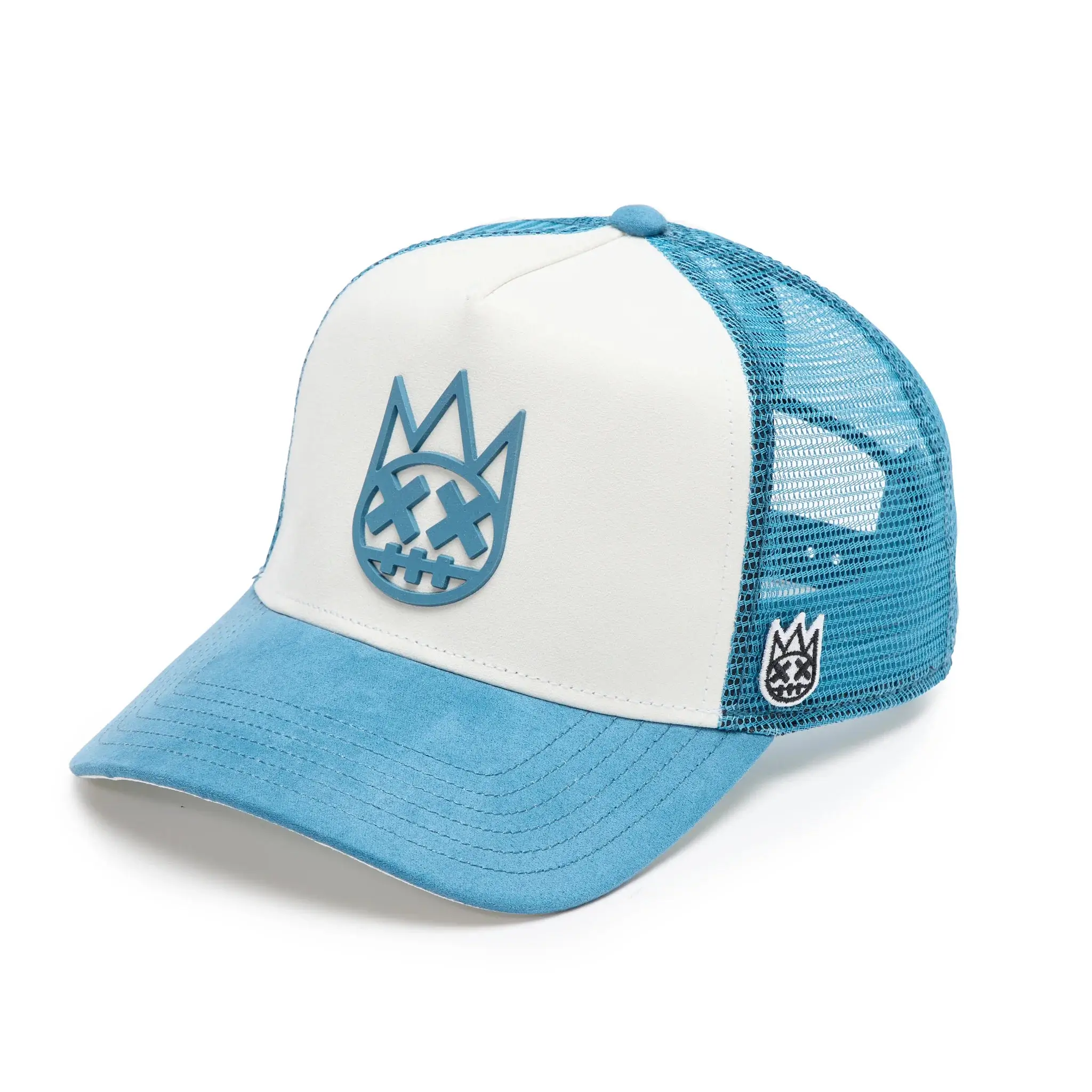
On April 4, 2025, something more than just a store opened at 586 Avenida Diagonal, Barcelona. The launch of the first-ever MANGO Home physical store was not just a retail expansion—it was the result of years of planning, testing, refining, and bold thinking.
It marked the translation of vision into space, of strategy into tangible experience. And for the people behind it—especially within the R+D+i team—it marked a milestone in a shared journey of innovation and execution.
This flagship MANGO Home store is more than a showroom. It is a curated environment where design, functionality, and brand ethos meet. It showcases how a global fashion brand can step confidently into the lifestyle and interiors segment without losing its identity. And it is the physical proof that cross-team collaboration and structured innovation can drive meaningful growth.
As someone who joined the R+D+i team not long ago, stepping into this moment feels both surreal and deeply affirming.
JOINING A TEAM THAT “DOES THINGS”
When I landed in the R+D+i (Research, Development, and Innovation) team, it became immediately clear that I was walking into something rare: a compact, focused group of 12 people, each one a powerhouse of creativity and initiative. They didn’t just ideate—they executed. They didn’t chase trends—they built frameworks for the future.
From the outside, R+D+i might sound abstract or even experimental. From the inside, it’s a strategic engine. The team is constantly asking: What’s next? What’s real? What can scale? What will create long-term value for the MANGO brand? These aren’t easy questions—but they’re necessary ones.
Coming in as a Project Manager, my role wasn’t just to “manage timelines” or keep things moving. It was to bring structure, clarity, and a global perspective. It was about ensuring that bold ideas didn’t just stay on whiteboards—but translated into blueprints, stores, products, and customer experiences that align with business priorities.
My goal was (and still is) to add value every day—by connecting dots, building bridges between departments, and helping creative minds operate within systems that support rather than stifle innovation.
BUILDING A STORE, BUILDING A FUTURE
The launch of the MANGO Home store was not the work of one team—it was the result of transversal collaboration across departments. From visual merchandising to supply chain, from legal to digital, everyone had a role to play. And that’s what makes the success of this launch even more meaningful.
What began as a vision in our R+D+i incubator is now something you can walk through, touch, and experience. The space reflects MANGO’s Mediterranean DNA, blending warm textures, natural materials, and elegant simplicity. But it also pushes boundaries—introducing new layouts, formats, and curated storytelling that goes beyond clothes.
Homeware is not fashion. It moves differently. It’s about permanence, not seasonality. Launching a homeware store meant reimagining the retail blueprint—from inventory planning to customer journey design. It meant bringing together the fast pace of fashion with the slower, tactile world of interior living.
That duality—speed vs. stability, trend vs. timelessness—is what makes MANGO Home so exciting. And getting to work on a project like this at the intersection of creativity and operations is the kind of challenge that energizes me every day.
THE VALUE OF CROSS-FUNCTIONAL THINKING
What truly powered this launch was the collaborative mindset across teams. The R+D+i department may have sparked the concept, but it was everyone—from finance to store ops, from architects to digital UX leads—who helped build the fire.
As a Project Manager, I witnessed firsthand how important it is to break silos early and often. We moved faster because we shared ownership. We executed better because we respected each other’s expertise. And we stayed aligned because the project had a clear north star: build something that reflects the MANGO brand while creating new value for customers.
This level of collaboration is not a given in large organizations. It’s something that needs to be cultivated, modeled, and protected. That’s why seeing this store open didn’t just feel like a success—it felt like a validation of how we work together.
STRATEGY, EXECUTION, AND THE ROAD AHEAD
There’s something deeply satisfying about seeing a project through from concept to completion. But the story doesn’t end with the opening of the store. In many ways, this is just the beginning.
The learnings from this launch will feed into our broader Home strategy. What worked? What didn’t? What surprised us? What systems need to evolve? How can we replicate the model in other markets while staying local and relevant?
These are the questions we now face—and the ones I’m excited to help answer. This is where structure becomes strategy. Where results feed back into innovation. Where success is measured not just in foot traffic or sales, but in how well we build the foundation for what’s next.
A PERSONAL NOTE: GRATITUDE AND GROWTH
This launch was personal for me. It was the first major milestone I experienced since joining MANGO. And it reminded me why I do what I do.
Being part of a team that thinks big and executes with discipline is a gift. Being trusted to help shape that execution is a responsibility I don’t take lightly. Every Gantt chart, every alignment meeting, every deadline—these aren’t just tasks. They’re steps toward something greater. Something that moves the brand forward.
To the 12-person R+D+i team: your drive, curiosity, and fearlessness are contagious. To the departments that came together to bring this project to life: your openness and excellence made it possible. And to everyone walking into the MANGO Home store for the first time: you’re stepping into a vision that started with “what if?” and ended with “let’s go.”
Ideologue
The opening of the first MANGO Home store is a milestone not just in terms of retail strategy, but in terms of culture. It represents a shift toward deeper lifestyle integration, toward more immersive brand experiences, and toward operational excellence that supports innovation.
It also represents what’s possible when ideas meet execution—when small teams with big visions are given the support, tools, and runway to create something extraordinary.
No comments yet.









